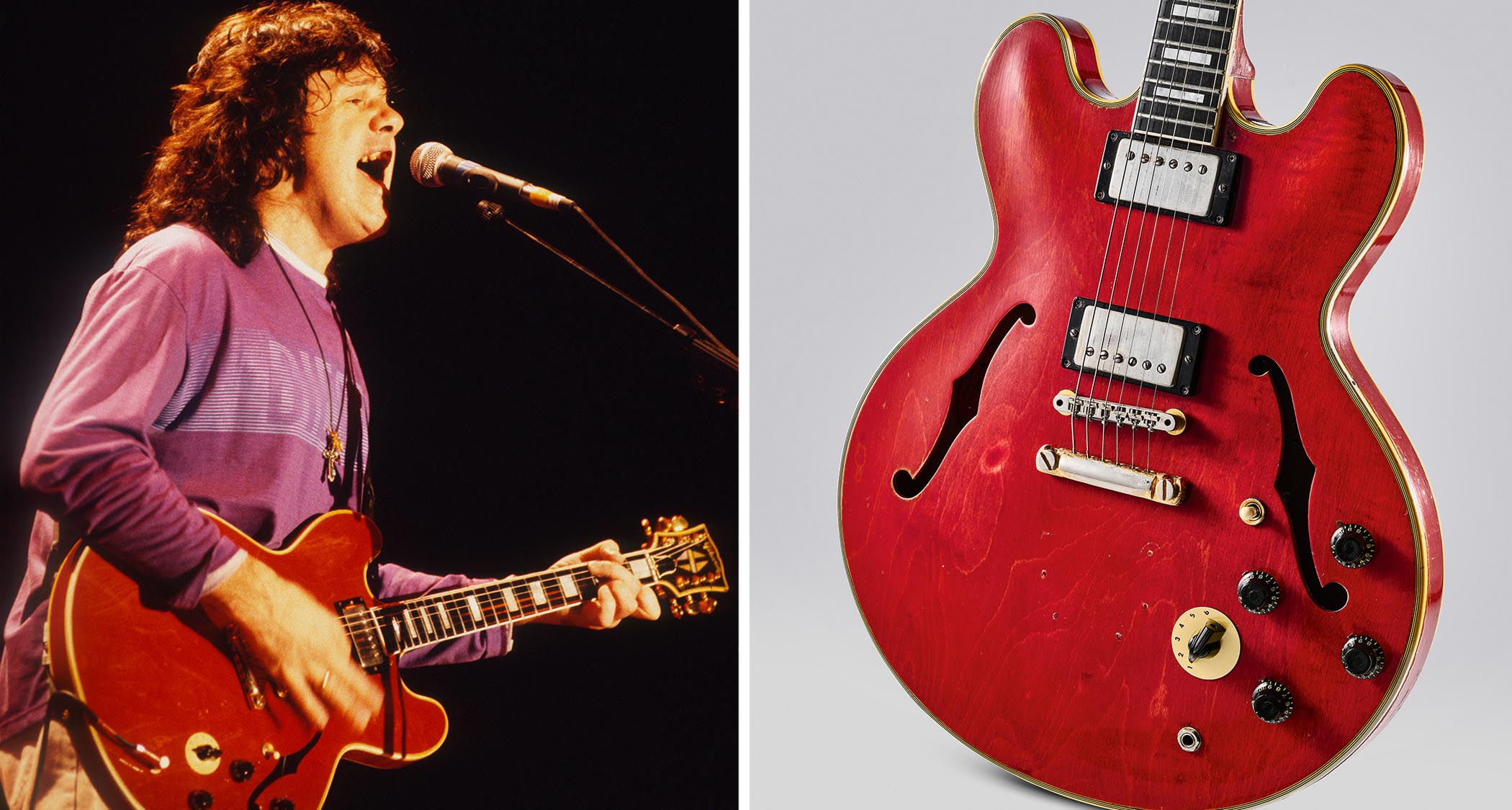Own your tone: the guitar terms you need to know
To help you perfect the feel and sound of your guitar rig, here’s a refresher on some key concepts…
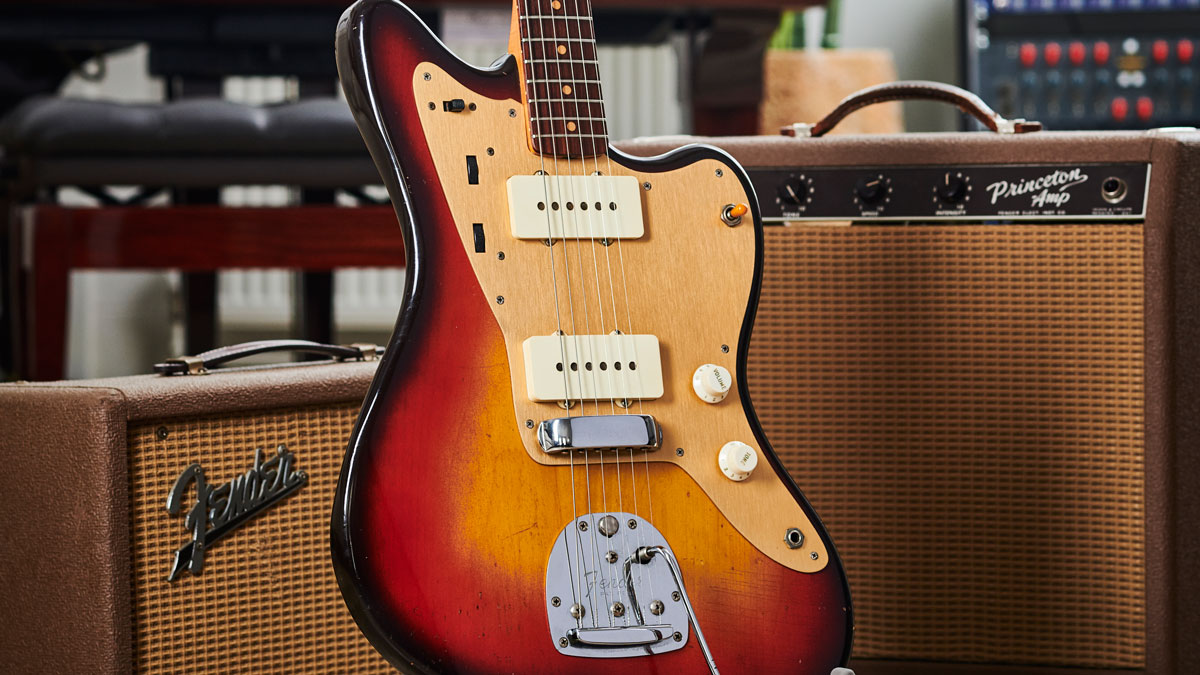
Your tone is about more than just sound; it’s the things that affect playing feel and touch-sensitivity as well. Some players like a clear, glassy note that can punch through any mix. Others need a swampy, down-and-dirty drive tone to feel really at home. Others still need both, at the touch of a footswitch, to get their point across.
Our goal is to get to those sounds deliberately and methodically, whenever we want them – not rely solely on random experimentation, as fun and useful as that can be.
But you don’t need a degree in audio engineering to get to the point where you can make effective decisions about tone-tweaking. As with cooking, there are some simple building blocks that can be combined in different ways to create thousands of distinct flavours.
We’re going to look at some of those building blocks below, so we completely understand our key ingredients before going on to show how they can be put to use in crafting your perfect tone.
Headroom
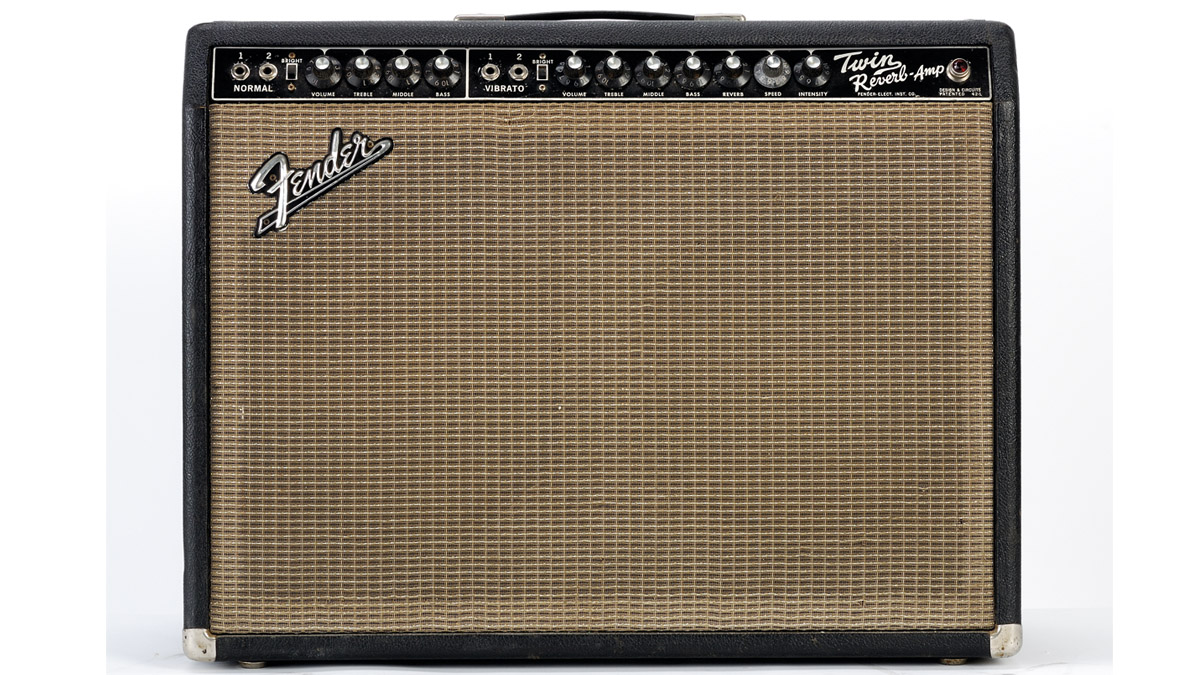
This is arguably the most important root concept we need to understand before we can make any effective decisions about tone-tweaking. Headroom is the capacity of an amp or pedal to reproduce a signal faithfully without distorting. With an amp that has lots of headroom, such as a Fender Twin, you can turn it up loud at the master volume and the sound will still remain glassy and clean, with the whole of the waveform of your signal amplified clearly and faithfully.
This is really important for players who rely on delivering huge clean tone at gig volume – think of Duane Eddy, for example, or the late surf-guitar master Dick Dale.
Headroom isn’t just relevant to amps, either – some drive pedals, such as Fulltone’s OCD, can be run at 18 volts to give them more headroom than if they were operated on a standard nine-volt supply. So why is headroom also important in an overdrive, where you’re not aiming for pristine clean tones?
All the latest guitar news, interviews, lessons, reviews, deals and more, direct to your inbox!
To understand that, we need to move on to our next key term…
Dynamic range
The most important thing that an amp (or pedal) with lots of headroom offers you is dynamic range. This means that if you dig in and play hard, then you hear that jump in loudness reproduced clearly and crisply. If you play softly again, the amp backs off to a whisper immediately.
Good dynamic range means all the detail of your playing, in terms of loud and soft dynamics, is captured faithfully in your audible tone. This is great for players who rely on nuanced loud/quiet dynamics to convey emotion, such as blues players. So if dynamic range is so brilliant for capturing the subtleties of your playing, why wouldn’t you want as much of it as possible?
The answer is that it can be pretty revealing – volume will rise and fall very abruptly according to how hard you’re picking, so your tone can sound a bit spiky and plunky if you’re not careful.
Also, you don’t have a comfortable cushion of sustain to help you milk those bends and get notes soaring. Obviously you’re going to want a bit of that, too – which leads us nicely to compression…
Compression
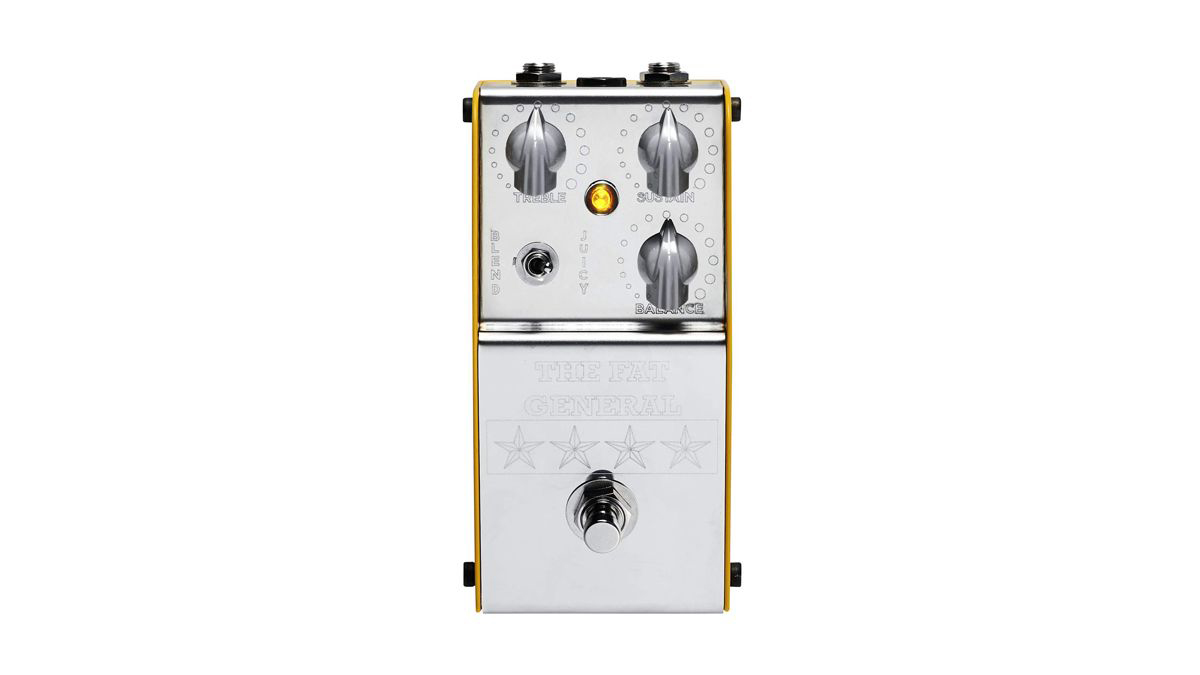
This process makes quiet sounds louder but also quashes spikes in volume. In practical terms that means it smooths out changes in volume and adds some flattering sustain.
By definition, compression means you that lose some dynamic range – but, in exchange, you gain a more rounded, mellow attack to each note and a pleasant bloom as the note fades.
Dedicated compressor pedals can give you full control over how much and how little of this effect you want. These are favoured by country players for chicken picking, where you’re aiming for a silky-smooth flow of rapid but clean notes with no uneven spikes in volume. Likewise, Roger McGuinn of The Byrds fame uses one with a 12-string electric to smooth out what might otherwise be quite a brash sound and help notes ring and shimmer for longer.
A given player’s sweet spot will lie somewhere between maximum possible dynamic range and maximum possible compression
Already you can start to see that a given player’s sweet spot will lie somewhere on the spectrum between maximum possible dynamic range and maximum possible compression. You need some dynamic range to get light and shade, in terms of picking dynamics, into your sound. But you also need compression to smooth and flatter and extend notes in a pleasant way.
How much or how little of each you want is absolutely central to achieving your perfect tone. However, it’s not quite as simple as picking a spot on that spectrum and setting up camp there. Why? Because your amp and drive pedals will also introduce a degree of natural compression themselves when you play. How much? Well, here’s where things get tricky, because that amount varies depending on a variety of other factors – which brings us to our next key term…
Clipping
Earlier on we looked at the concept of headroom. But what happens when you run out of it? Circuits that amplify signal – from the mighty power valves in your amp to the transistors in your overdrive pedal – all have a limit to how much signal they can handle while still reproducing all of the waveform fully and faithfully. When they can’t amplify the full waveform any more, clipping occurs.
As the name suggests, this means the peaks of the waveform are lopped off when they hit the ceiling of how much the circuit can handle. This has profound effects on your sound and produces those great crunchy drive sounds we all love. And because the loudest parts of the waveform get clipped off, it’s also a form of compression.
So, what causes clipping? One way clipping occurs is to turn up the gain – the degree to which the signal is being amplified by a given circuit. When the circuit runs out of power to amplify the full waveform, clipping occurs at the peaks of the signal. But if the incoming signal is already pretty hot – for example, if it has already been boosted by a drive pedal earlier in the chain – then the threshold at which the circuit starts clipping is reached much quicker.
For a classic example of this, plug a guitar with weak singlecoil pickups into your amp and play hard. The signal from that probably won’t be strong enough to push the amp into clipping. But if you then put a low‑gain overdrive between the guitar and amp, the pedal will clip the signal, which is audible as crunch tone or light distortion. If you then turn the preamp gain of your amp up to full as well, that crunch tone will likely turn into fullblown distortion as clipped signal cascades into a maxed-out preamp and gets clipped again.
The hotter the signal coming from your guitar itself, the more likely everything else downstream in the signal chain will tend to compress and start clipping
As mentioned, this multi-stage process can yield some deliciously complex distorted tones and adds sustain and pleasant compression to your tone. The element of depth and complexity comes in when you have many points at which some clipping can occur in your signal path – for example, if you have two overdrives, one running into the other (known as ‘stacking’) and then the preamp stage of your amp and, finally, if you crank the master volume high enough, clipping from the amp’s power valves themselves.
By contrast, if you max out the clipping at just one point in the chain, say by turning the gain control of your distortion pedal up full, it can result in a fizzy, one-dimensional distortion sound, lacking in depth.
The final key point to bear in mind when shaping your tone is that the hotter the signal coming from your guitar itself, the more likely everything else downstream in the signal chain will tend to compress and start clipping. In other words, if you play hard through a guitar with hot humbuckers, everything from your drive pedal to your power valves will be pushed closer to clipping from the get go. If you begin with a lot of signal from a hot pickup, your dynamic range may be limited before you even adjust anything else, which is worth bearing in mind.
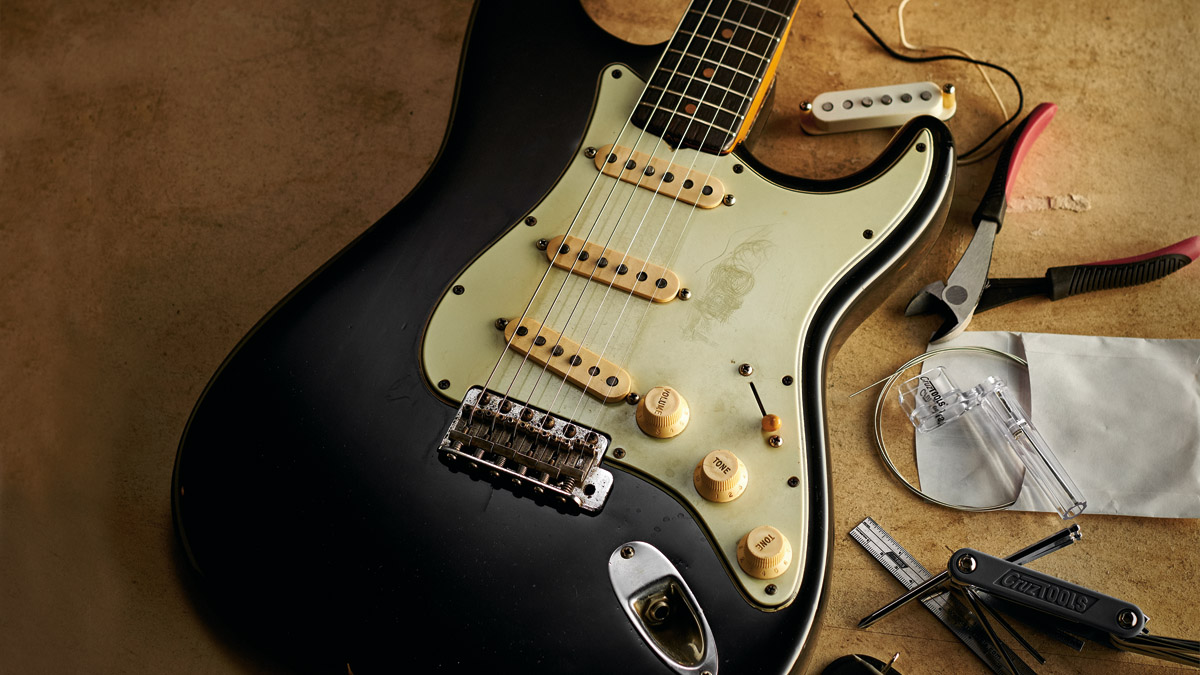
Core considerations
Guitarist's Mod Squad chief, Dave Burrluck, offers some thoughts on improving the core of your tone equation – your guitar – with minimal outlay…
“Some years ago the band I was in had been booked into a recording studio, with a producer, to record our next single. Now, this was the early 80s and I was immersed in making guitars. I was pretty proud of my creation – a bound Les Paul Special-style in electric blue, a pair of DiMarzios and a homemade active circuit no less.
“After a few run-throughs of the track, the producer wasn’t happy. Things weren’t sounding in tune with our two guitars (both made by me). The producer grabbed my guitar, plugged it into the studio’s strobe tuner and handed it back. ‘You need to check your intonation, mate.’ While the now in-tune-sounding track sunk without trace, the memory of that session lives on. As cool as I thought my guitar, my effects and my amp sounded, my setup wasn’t quite fit for purpose.
An awful lot of ‘problems’ can be quickly cured by a full setup
Dave Burrluck
“A good guitar, or even a not-sogood guitar, will always benefit from a little bit of TLC. An awful lot of ‘problems’ can be quickly cured by a full setup and if you’re not able to (or experienced enough) to do that yourself, I strongly suggest you get some pro help. New guitars can be surprisingly challenging. ‘It’s a new guitar, it should be perfect,’ you shout. Well, you get what you pay for, but never expect a new guitar to be perfect, not least perfect for you.
“One thing about new guitars is that they simply ain’t used to being a guitar yet. Daft? One reason certain vintage guitars are so lauded is because they quite possibly have had countless hours’ playing on them. The instrument settles in. Even top-notch guitars like a PRS need playing: PRS signature artist David Grissom told me years ago that the first time you play it will be the brightest it’ll ever be. It needs seven or eight hours to play in. You don’t need to change anything, just play it.
“Getting used to a new or new-to-you guitar takes time. No-cost tweaks like pickup heights and tilts can often be overlooked and setting those – at the volume you intend to play at – can make a substantial difference. Using your volume and tone controls to shade your sound, subtly or quite dramatically, might be second nature to some of us but completely alien to others. Getting to know what your instrument is capable of then takes a little time.
“Your listening environment is crucial, too. The room and the venue you’re playing in are a big part of what you hear. Get that guitar working as it should, set up how you like it, and put in the hours. I guarantee it’ll save you money and more than likely improve your tone.”
